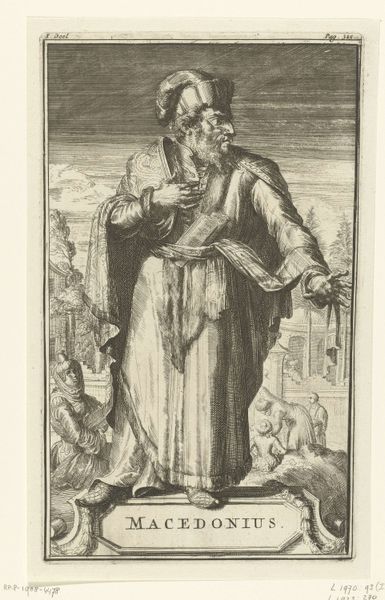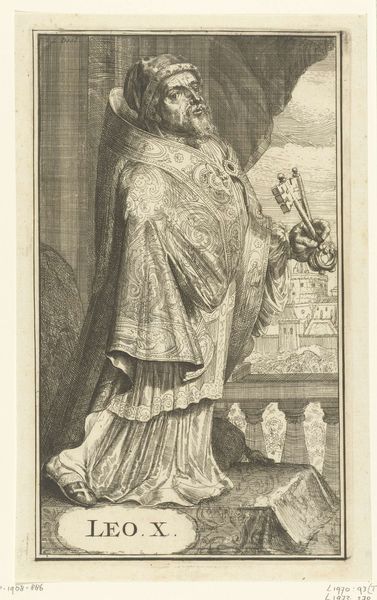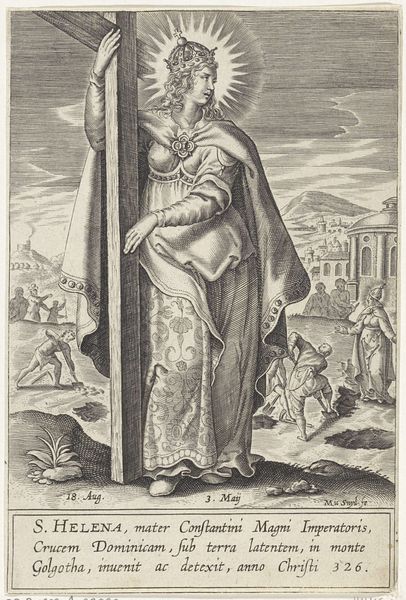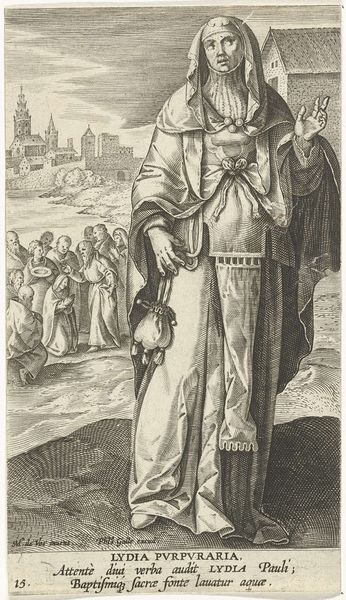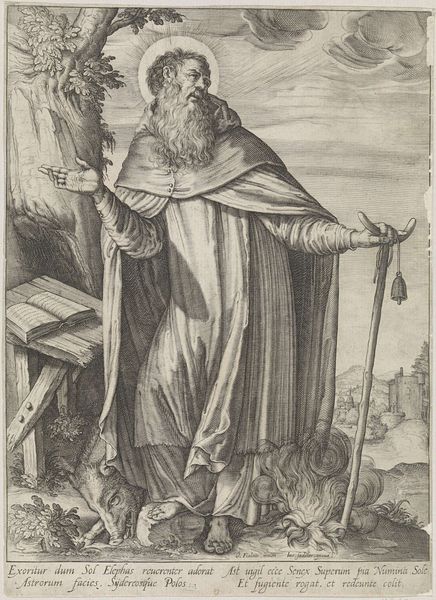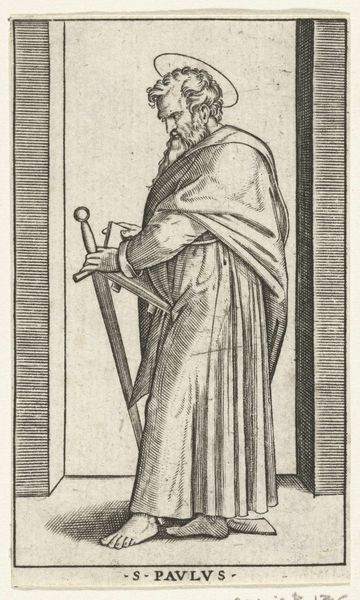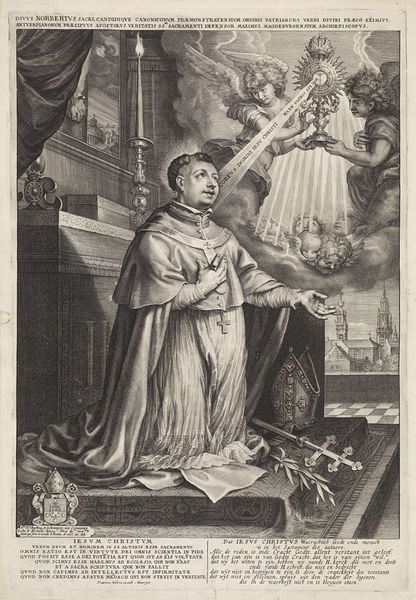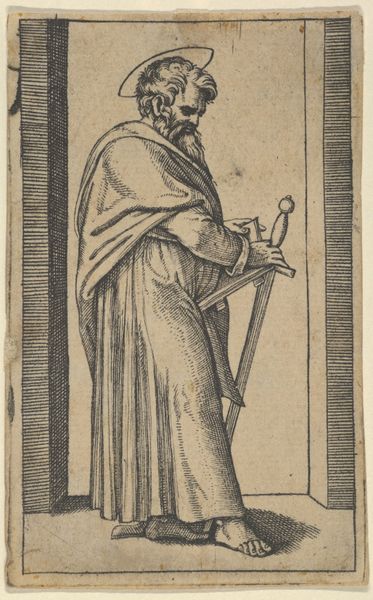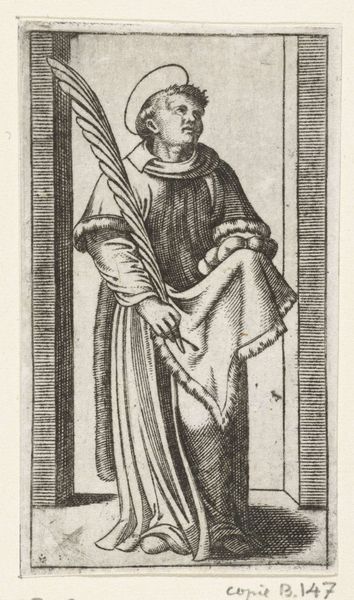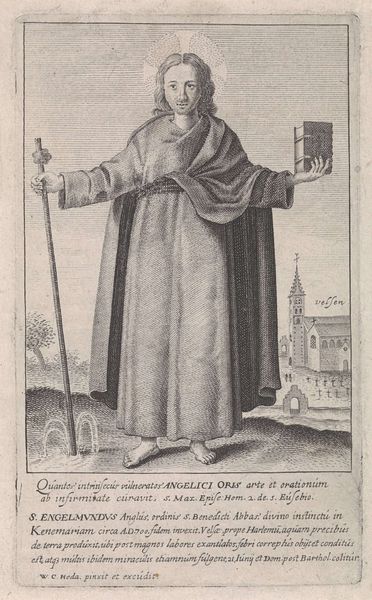
print, engraving
#
portrait
#
baroque
# print
#
old engraving style
#
figuration
#
line
#
history-painting
#
engraving
Dimensions: height 266 mm, width 160 mm
Copyright: Rijks Museum: Open Domain
Curator: Let's delve into this print, "Portret van Savonarola," created in 1701 by Romeyn de Hooghe. The work, held here at the Rijksmuseum, utilizes the precise technique of engraving. Editor: The somberness immediately strikes me. It's austere, stark in its presentation of the figure, the textures are built through laborious lines, yet the tone speaks volumes about authority. Curator: Absolutely. De Hooghe was a master of conveying political messages through print. Savonarola, of course, was a complex figure, a Dominican friar who challenged the corruption of the Florentine Renaissance. De Hooghe places him amidst the city he preached against. Note the architectural forms, meticulously etched; the assembly of the crowds listening below. It's all carefully planned for maximum visual and symbolic impact. It speaks of power but also of popular sentiment. Editor: I'm drawn to how the lines construct Savonarola's garment. Look how heavy the robes appear, and at the hands; one raised in admonition, the other almost pleading, a sense of materiality brought out through the artist's skill in production and manipulation. Considering the historical context and potential use for didacticism, this attention to construction, to material, offers insights into 18th-century printmaking and what kind of market or need was supported. Curator: And indeed the clothing almost tells the whole story: from peasant simplicity to high cleric. He defied both. The way the engraver manipulates shadow becomes quite persuasive in constructing Savonarola's intense expression, a figure embodying resistance. Given the period's tumultuous religious and political landscapes, images like these held profound ideological sway, pushing against hegemonic discourses. It’s a very visual form of activism. Editor: We can almost feel the weight of those robes and consider where they were produced. This speaks not just of resistance or dogma, but also labor, to where and by whom those garments were constructed, what kind of value was placed on that kind of work. I suppose I see in these repetitive motions also the repetitive tasks behind his order. It's an object loaded with labor. Curator: His gesture towards the heavens while tethered to earthly fabrics...it shows the dual struggles. Examining the piece reminds me of the potency of print as a medium for circulating ideas. Editor: The print medium shows such dedication in its manufacture. It underscores, ultimately, the deeply considered and complex story behind this piece.
Comments
No comments
Be the first to comment and join the conversation on the ultimate creative platform.

